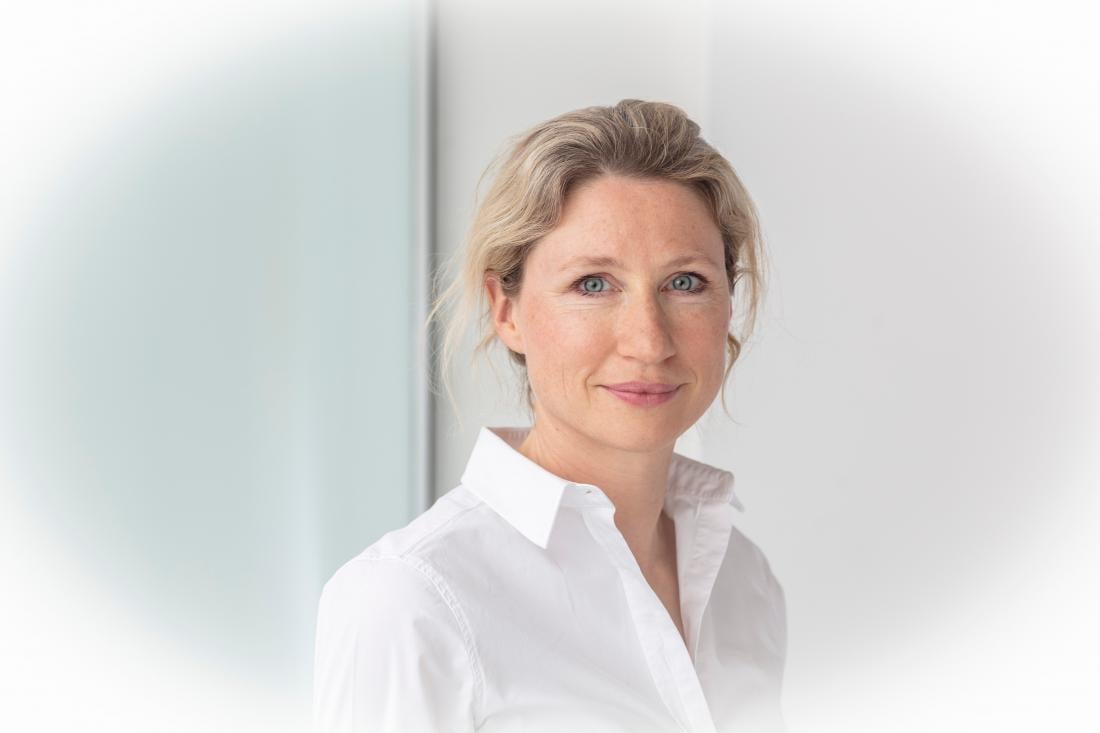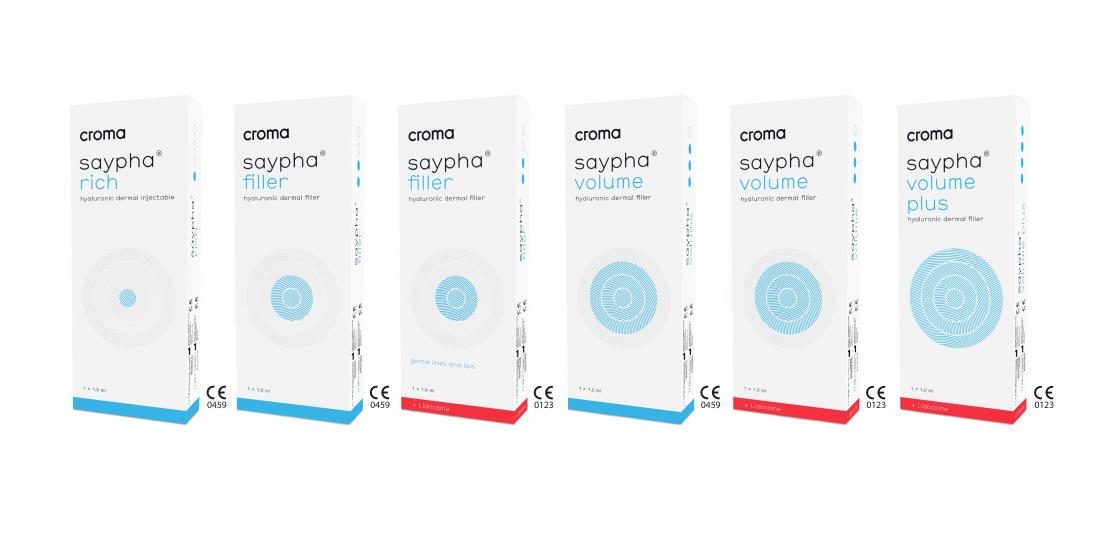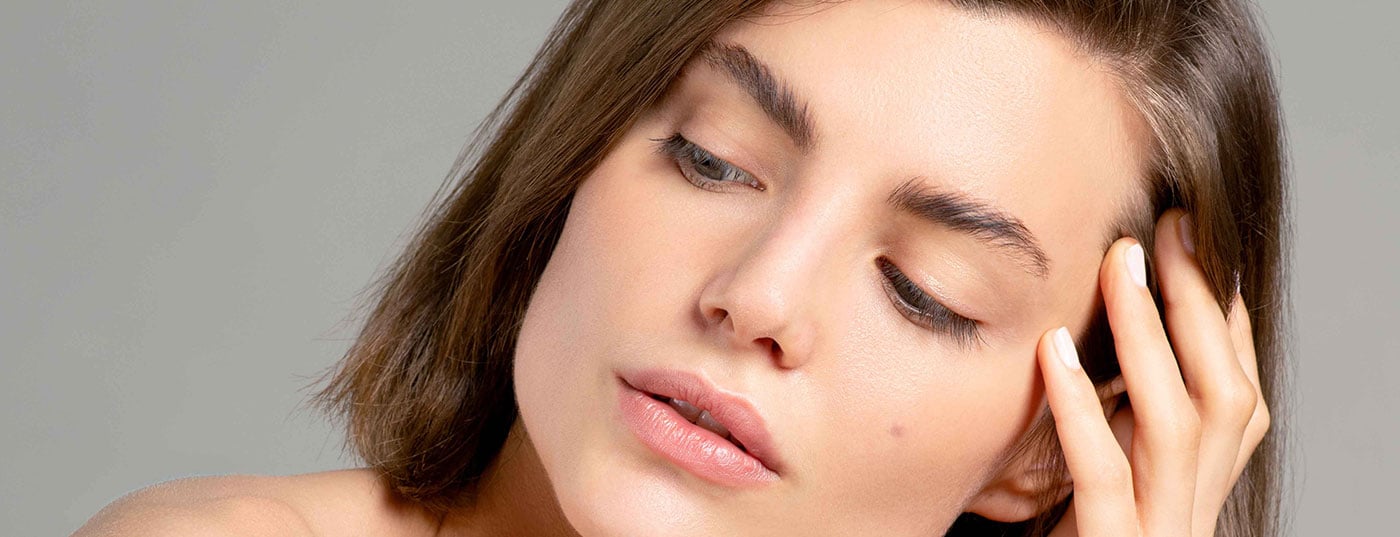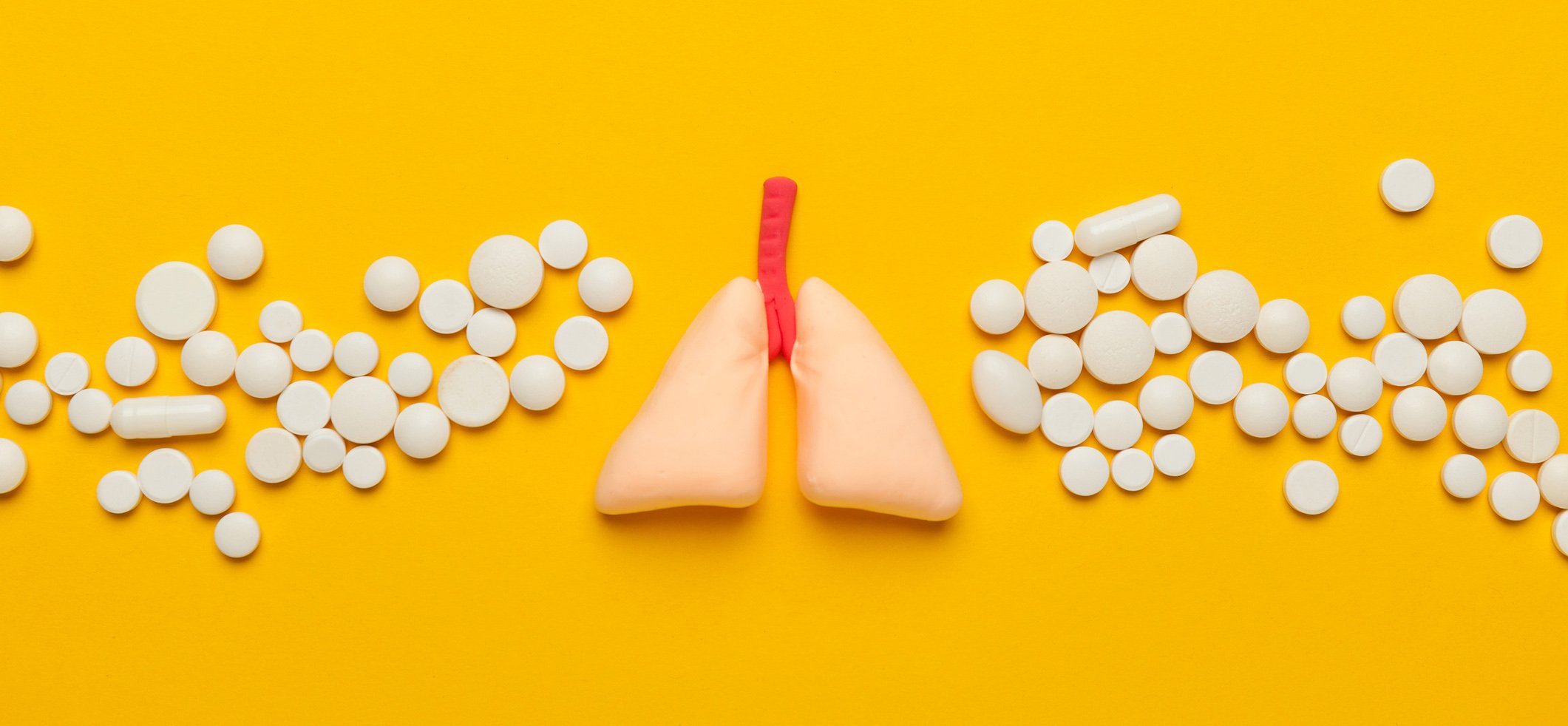Due to its properties, hyaluronic acid is particularly suitable for the treatment of wrinkles caused by the loss of volume of the skin and loss of its elasticity with age.
In the field of aesthetics, the demand for non-surgical measures in particular has been rising constantly for years. In particular, hyaluronic acid injections are one of the most popular minimally invasive treatment procedures of our time.
Mrs. PD Dr. med. Dr. med. dent. Christine Jacobsen, Specialist in oral and maxillofacial surgery and owner of the practice The Facial Surgery Team in Zurich, talks to us about the use of the hyaluronic acid filler saypha® VOLUME PLUS1.
Doctor Jacobsen, what are the most sought-after indications in your practice for hyaluronic acid filler treatments and what products do you use for them?
In my practice, I use hyaluronic acid fillers primarily for two purposes: on the one hand, for modeling the face, with the goal of achieving shaping changes. On the other hand, to make patients look fresher in a natural way, for example by restoring lost volume.
The product saypha® VOLUME PLUS is used to restore volume in the face. For which areas do you mainly use the product and what experience have you had with it?
As a surgeon who also works a lot with bone, saypha® VOLUME PLUS is a very good product to restore exactly this lost volume. At the same time, however, I also have the possibility to model specifically and, for example, to deliberately emphasize exciting, beautiful features of a face or to conceal peculiarities that patients find disturbing. You can lift soft tissue with it, because the product is strong enough for that.

PD Dr. med. Dr. med. dent. Christine Jacobsen, Specialist in oral and maxillofacial surgery.
Which patients do you think benefit most from treatment?
Patients who specifically want to change something in their face – for example, a more defined jawline or a change in the shape of the chin – will benefit greatly from this product. But also in patients who have lost a lot of weight and now have a lot of excess skin – but do not want a surgical procedure – I can achieve very beautiful results with a targeted build-up and modeling of the underlying support structure of the face.
Are there any basic taboo zones for augmentation?
For me, maintaining facial expressions is the essential element of non-verbal communication and therefore a very important factor for a natural result. My limit is an intervention in the patient’s facial expression, that is, in the muscles of the face. I avoid this at all costs. Especially in the area around the mouth, I see patients again and again who no longer recognize themselves after a filler treatment. To correct this then is often very difficult.
Which injection technique do you mostly use or recommend?
The technique depends entirely on what I want to achieve. I vary the techniques and adapt them to the initial situation. There is no “one” standard technique that I use. Depending on where and how I want to place the product, I use either a needle or also a blunt cannula; always taking into account the anatomy and the “risk areas”.
Have you had any notable complications or side effects after treatment with saypha® VOLUME PLUS?
No, fortunately not yet, but that doesn’t mean it couldn’t happen. I think you always have to be very careful and conscientious and never lose respect for the tissue and anatomical structures – even if you are so experienced.
How do you rate saypha® VOLUME PLUS compared to other HA fillers used for maximum depth augmentation and volume deficits?
With saypha® VOLUME PLUS, I have found a product that is ideal for me. If I find a product good and am convinced of it, then I also stick with it, possibly with an alternative. For me, the handling of the syringe and the – despite the strength – easy placement is an important argument. The gel holds very nicely and there is no migration at all.
The market for hyaluronic acid fillers is highly competitive and new products and brands are constantly being added. What criteria do you use to decide on a particular brand of filler? What do you pay attention to?
As already briefly mentioned, handling and the absence of churning are very important criteria for me. The well-being and health of my patients are my top priority. My products must be traceable and backed up with data, in other words, they must be manufactured in a flawless and transparent manner – an absolute prerequisite for all the products I use. For the health of patients and the long-term effect of hyaluronic acid in the tissue, it is essential that the products are as pure as possible and without undesirable residues of the crosslinking agent used, such as BDDE. The Austrian company Croma-Pharma, which produces the hyaluronic acid filler line saypha®, is known for offering particularly high pharmacological purity of its hyaluronic preparations. This is also evident in my many years of practical use; that is why I also have a very high level of confidence in this product.
Do you have any tips for beginners?
The basic prerequisite is a good anatomical knowledge of the individual layers and anatomical structures such as vessels, nerves, ligaments and musculature.
For anyone starting with hyaluronic acid fillers – basically for EVERY TREATOR – it is very important that the goal of the treatment is clearly defined. The procedure, even if minimally invasive, must be done logically and with a plan. I have to know how to answer the following question in advance: “What would I like to achieve and where, i.e. in which layer do I have to place which product and how? Simply injecting hyaluronic acid into the tissue once to “get rid of” wrinkles is counterproductive.
I generally advise starting simple with standard localizations, for example, the cheekbones or even the jaw angles. Then, when you feel more confident and have observed for yourself how the tissue reacts, even in the medium to long term, you can slowly expand your treatment scope. Only those who constantly re-evaluate their technique and treatments and adapt them accordingly can continue to develop. In every level it is very useful to watch other colleagues doing treatments. Through this external input, one questions one’s own procedures and practices and can adapt and optimize them accordingly.
|
Our interview partner PD Dr. med. Dr. med. dent. Christine Jacobsen, a specialist in oral and maxillofacial surgery, has many years of experience in the surgical treatment of jaw malpositions and in facial plastic reconstructive surgery. She is the owner of the practice “The Facial Surgery Team” in Zurich. Her work focuses on the surgical treatment of respiratory sleep disorders, temporomandibular joint disorders, rhinoplasty, facial profile changes, and aesthetic medicine. |

|
ABOUT saypha® VOLUME PLUS The product serves the purpose of restoring volume to the face as part of the treatment of signs of aging skin. It consists of cross-linked hyaluronic acid, enriched to a concentration of 25 mg/ml, and an addition of 0.3% lidocaine hydrochloride. The product is indicated for the correction of moderate to severe volume deficits in the midface, zygomatic-malar region, anteromedial cheek region and submalar region. It is to be administered by deep subcutaneous and/or supraperiosteal injection and should be administered only by physicians familiar with intradermal injections for aesthetic enhancement. saypha® VOLUME PLUS is a product of Croma-Pharma GmbH, which manufactures a wide range of different hyaluronic acid preparations in Austria. You can find more information at www.croma.ch Tel: +41 52 633 00 90 E-mail: info@croma.ch You want to know more about saypha® and contact Croma-Pharma? Click here |
1CE0123
The physician confirms that he has informed the patient about the risks associated with the intended use of the medical device. Information on risks and side effects associated with the use of the product is provided in the instructions for use.













